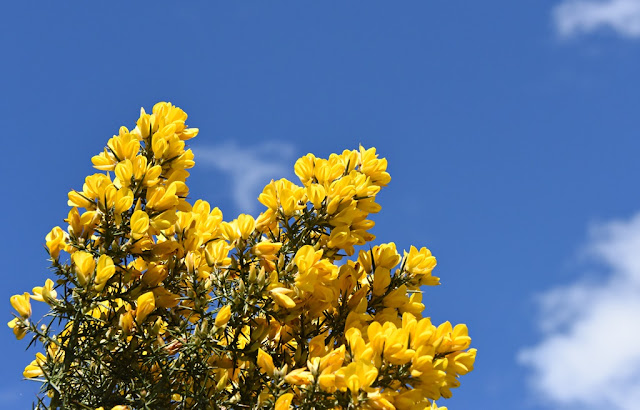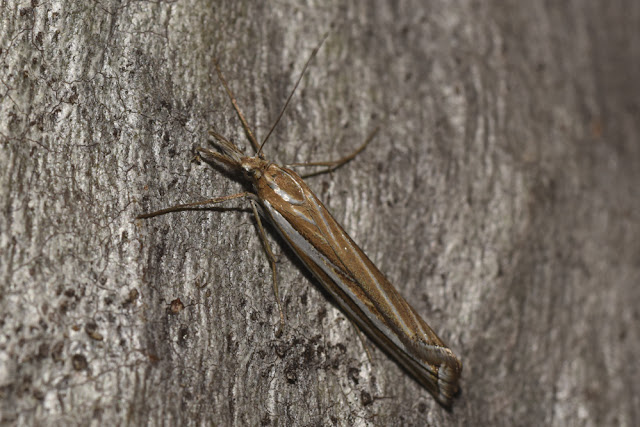Yellow
It's May, I'm in Scotland and the colour of the month is distinctly yellow. I was in the west coast Highland village of Badachro a few days ago where the Broom Cytisus scoparius and Gorse Ulex europaeus were spilling over with flowers.
These shrubs are spectacular en masse, but the detail of the Broom flowers is just as impressive.
The Gorse looked vibrant when viewed against the full blue sky from low down.
And the detail of the Gorse flowers, tightly packed into clusters, was picked out by backlight.
Meanwhile, down at ground level, the Lesser Celandine Ranunculus ficaria flowers were glistening amongst the remains of last year's oak leaves and fern fronds.
The Celandine petals simply radiated yellow.
And Dandelions Taraxicum officinale, such valuable food plants, provided an early source of nectar for insects.
Yellow - what a wonderful colour.
Wednesday, 16 May 2018
Wednesday, 25 April 2018
Moths April 2018
The moths are still flying here in Canberra, and the autumn flying species are beginning to show. As with previous months, I have posted here a brief selection of species I saw when out trapping moths with Glenn Cocking on Black Mountain last week. Glenn also identified them for me.
This first one, above and below is Chenuala heliaspis, a robust species with a good covering of 'hair' and splendid spreading antennae.
Some of these shots were taken of the moths on the white sheet which the lamp was shining on, others were of moths that landed on nearby trees or shrubs. To attain true colours, it is important to shield the moths from the lamp light and use a flash to freeze all motion.
Proteuxoa cinereicillis - what are the little spikes on its legs for?
Agriophara sp? If this one wasn't aligned squint with the bark it would be virtually invisible.
Achyra affinitalis - what lovely long legs this one has, and spectacular large eyes for such a slim body and head.
Utetheisa pulchelloides - the heliotrope moth.
Hednota sp - a long slim body, well about 1 cm, with distinctive stripes along the folded wings and long slim antennae.
And this was the champion of the night, as far as size matters. A male White-stemmed Gum Moth Chelepteryx collesi. A full 14 cm wingspan.
The moths are still flying here in Canberra, and the autumn flying species are beginning to show. As with previous months, I have posted here a brief selection of species I saw when out trapping moths with Glenn Cocking on Black Mountain last week. Glenn also identified them for me.
This first one, above and below is Chenuala heliaspis, a robust species with a good covering of 'hair' and splendid spreading antennae.
Some of these shots were taken of the moths on the white sheet which the lamp was shining on, others were of moths that landed on nearby trees or shrubs. To attain true colours, it is important to shield the moths from the lamp light and use a flash to freeze all motion.
Proteuxoa cinereicillis - what are the little spikes on its legs for?
Agriophara sp? If this one wasn't aligned squint with the bark it would be virtually invisible.
Achyra affinitalis - what lovely long legs this one has, and spectacular large eyes for such a slim body and head.
Utetheisa pulchelloides - the heliotrope moth.
Hednota sp - a long slim body, well about 1 cm, with distinctive stripes along the folded wings and long slim antennae.
And this was the champion of the night, as far as size matters. A male White-stemmed Gum Moth Chelepteryx collesi. A full 14 cm wingspan.
Subscribe to:
Comments (Atom)















